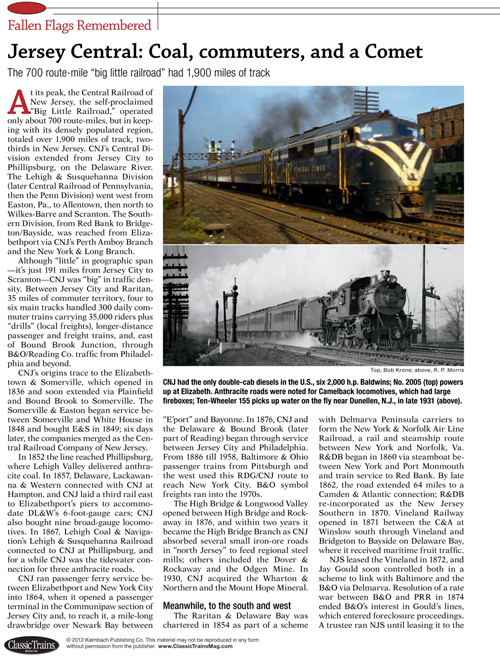
Read about the Central Railroad of New Jersey in a PDF of the article: “Jersey Central: Coal, Commuters, and a Comet” published in the Fallen Flags Remembered section of the Winter 2010 issue of Classic Trains magazine. Download the story by clicking on the PDF below. […]
Read More…
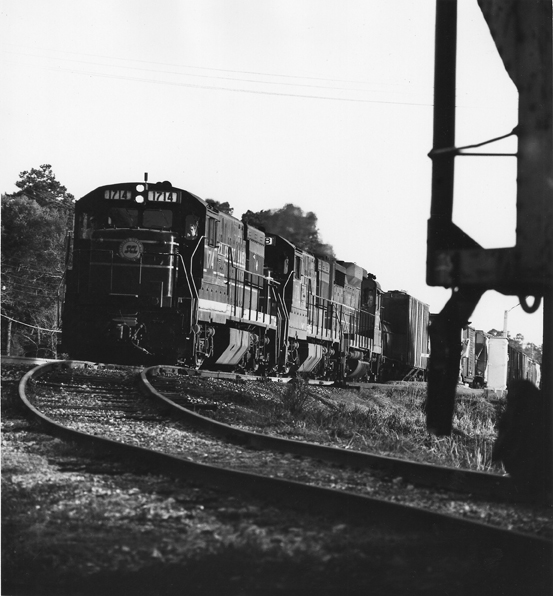
An eastbound run through train between the Southern Pacific and Seaboard Coast Line between Houston, Texas, and Jacksonville, Fla., rumbles through Orange, Texas, behind a trio of SCL units, two U30Bs and a GP30. The date is May 1972. Photo by J. Parker Lamb Jr. […]
Read More…
FULL SCREEN Photograph by Scott Lothes The most luxurious train in Japan, the overnight Cassiopeia from Sapporo to Tokyo, rolls along Volcano Bay behind two specially painted DD51 locomotives just before sunset on June 18, 2007. FULL SCREEN Photograph by Scott Lothes Like locomotive engineers across generations and oceans, the driver of JR Hokkaido’s Hamanasu […]
Read More…
FULL SCREEN UP photo Casement Brothers construction train used during the building of the Union Pacific Railroad. Three 4-4-0s were the power this day. FULL SCREEN UP photo Casement Brothers camp train during the construction of the UP. Note the barely finished cottonwood logs stacked as ties to the left and the scant ballast, probably […]
Read More…
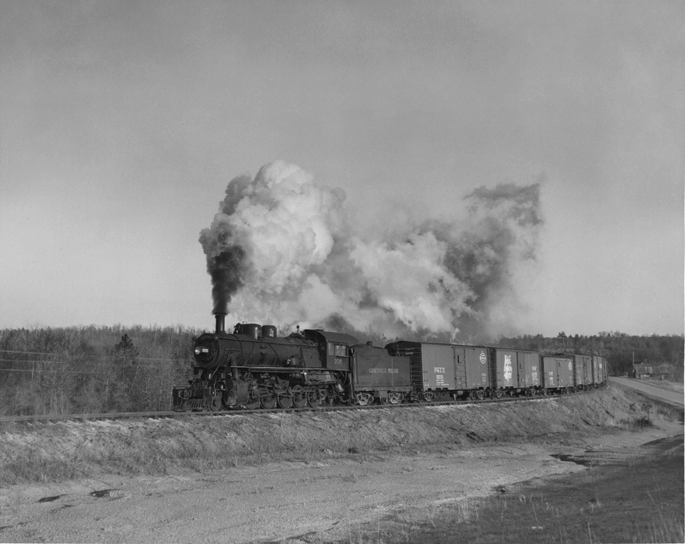
Gainesville Midland Russian Decapod No. 206 rolls near Candler, Ga., on March 25, 1955, with a freight from the Seaboard Air Line connection at Athens. The engine was once Seaboard Air Line No. 544 and had originally been built for export to Russia but never went overseas. Photo by Hugh M. Comer […]
Read More…
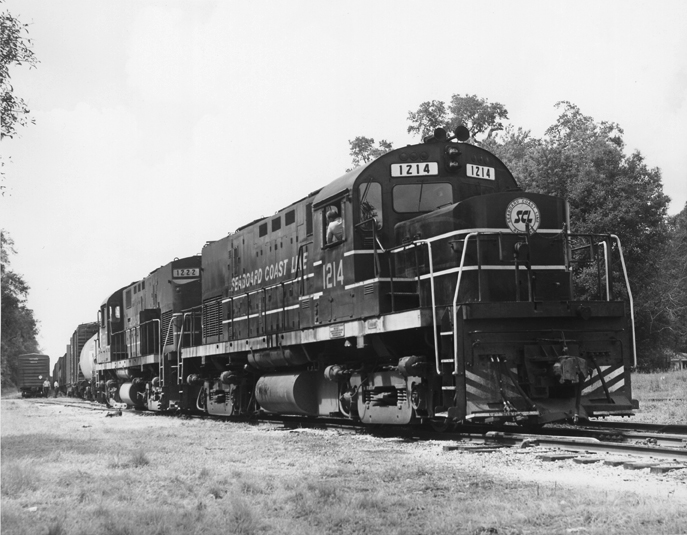
Seaboard Coast Line C420s Nos. 1214 and 1222 work Rochelle, Fla., on April 13, 1974. The rare units later were shipped to SCL affiliate Louisville & Nashville when that railroad became power short in the late 1970s. Photo by William J. Husa Jr. […]
Read More…
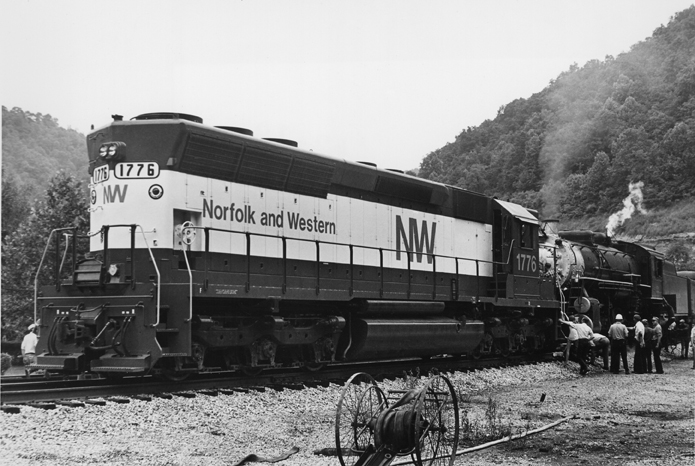
Norfolk & Western Bicentennial SD45 No. 1776 ties onto Southern Railway 2-8-2 No. 4501 at Mullens, W.Va., on July 5, 1974, during the multi-day Independence Limited II excursion from Cincinnati to Alexandria, Va. The SD45 helped the 1911 Mikado on steep grades over former Virginian trackage between Gilbert and Narrows. Photo by J. David Ingles […]
Read More…
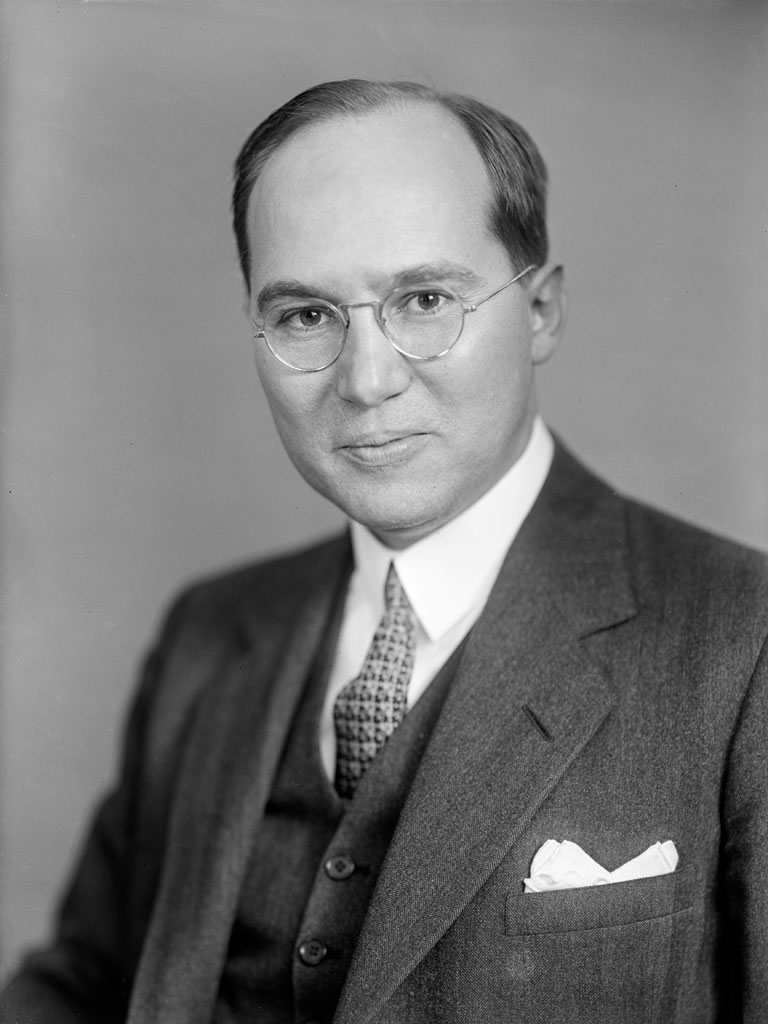
FULL SCREEN Photograph by John Walker Barriger III. Courtesy of the John W. Barriger III National Railroad Library, St. Louis Mercantile Library, University of Missouri, St. Louis. A westbound, steam-powered freight train on the Santa Fe Railway framed by the front window of an early diesel locomotive at Matfield Green, Kansas, circa 1940. The diesel, […]
Read More…
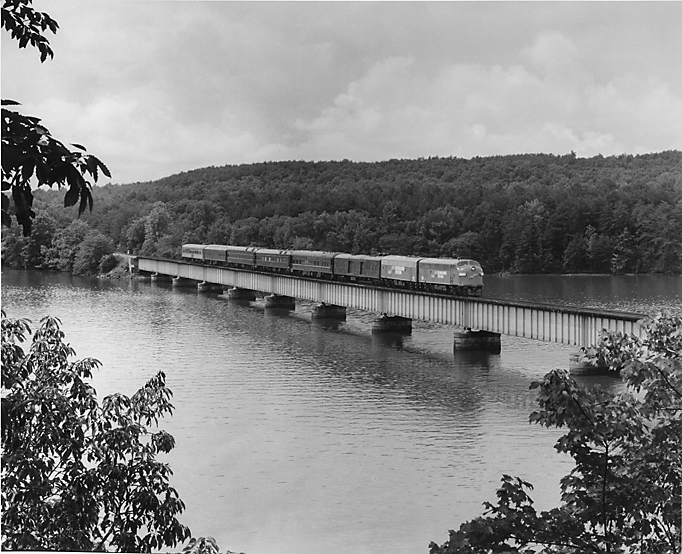
Seaboard System Railroad officials inspect the jointly owned Winston-Salem Southbound Railroad (with Norfolk Southern) on Aug. 8, 1985. The train is crossing the Yadkin River near Badin, N.C., behind former Clinchfield Railroad F units Nos. 116 and 117. Photo by Doug Koontz […]
Read More…
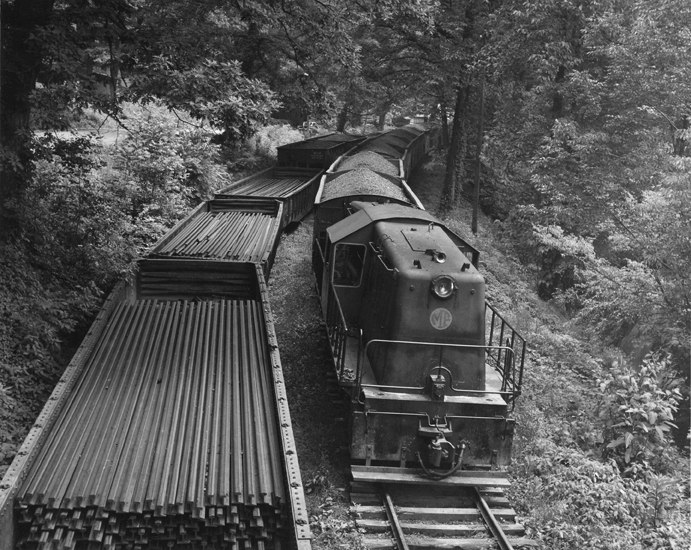
In high hopes of increased coal traffic, West Virginia’s Middle Fork Railroad in the early 1960s laid heavier rail on its main line. Some of that rail waits in gons while a loaded coal train moves past at Ellamore, W.Va. Alas, the traffic never materialized. Photo by J. Michael Dunn III […]
Read More…
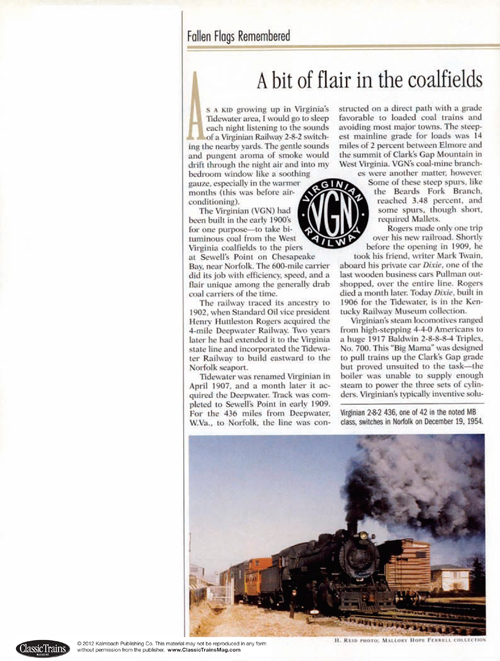
Read about the Virginian Railway in a PDF of the article: “A Bit of Flair in the Coalfields” published in the Fall 2001 issue of Classic Trains in the Fallen Flags Remembered section. Download the story by clicking on the PDF below. […]
Read More…
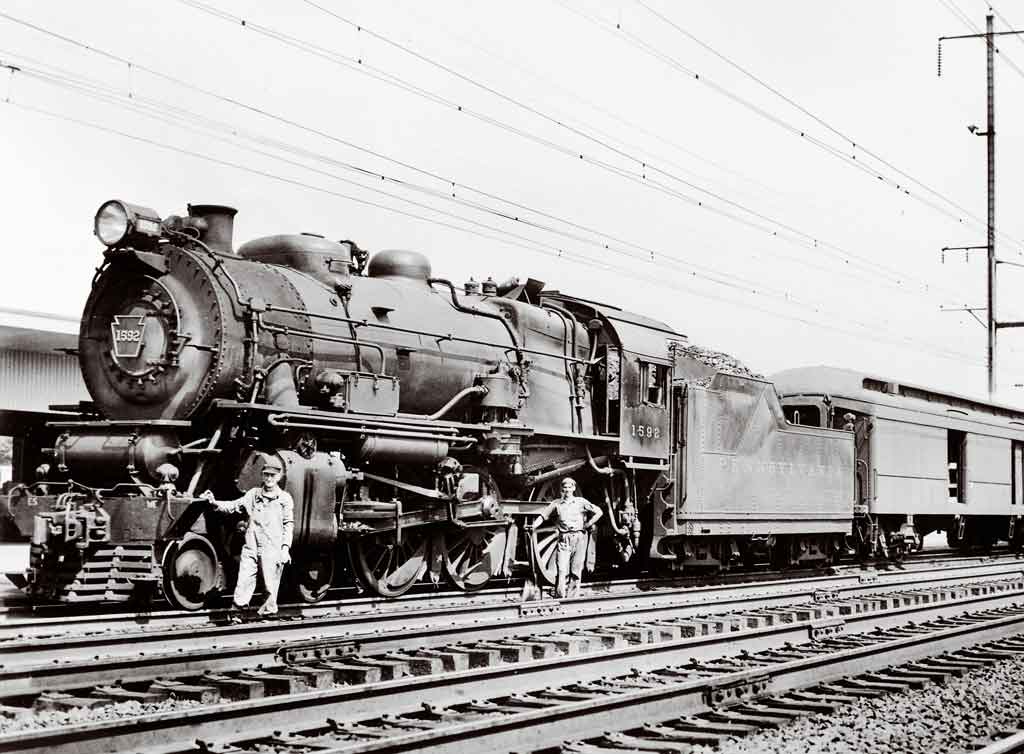
Engineer Norman Strickland (in front of cylinder) and fireman Russell Phillips stand at Perryville, Md., with G5s 1592, ready to depart with MD-58 for Philadelphia via the Octoraro Branch. George Gillespie Probably 90 percent of all railfans would say their favorite locomotive is the one on which they took their first cab ride. This is […]
Read More…










